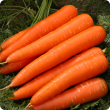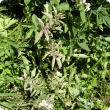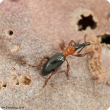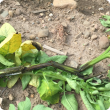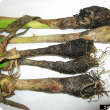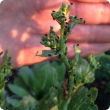Crops
The Department of Primary Industries and Regional Development continues to support the growth and international competitiveness of all crop industries in Western Australia.
With a 2400 kilometre span from its tropical north to its temperate south, WA supports a broad range of cropping industries from rain-fed winter cereals through to irrigated horticultural crops.
In the 2012/13 year the WA cropping industries exported a total of $3.9 billion which comprised: $3.1 billion of cereals, $859 million of pulses, pastures and oilseeds, $142 million of horticultural crops. The major contributors to these exports were wheat ($2.7 billion), canola ($756 million), barley ($377 million), lupins ($42 million), carrots at $48 million, oats ($12 million), and strawberries at $5.5 million.
Articles
Pages
Filter by search
Filter by topic
- Biosecurity & quarantine (19) Apply Biosecurity & quarantine filter
- (-) Remove Horticulture filter Horticulture
- Biosecurity (19) Apply Biosecurity filter
- (-) Remove Plant biosecurity filter Plant biosecurity
- (-) Remove Vegetables filter Vegetables
- Pests, weeds & diseases (18) Apply Pests, weeds & diseases filter
- Diseases (14) Apply Diseases filter
- Potatoes (12) Apply Potatoes filter
- Tomatoes (7) Apply Tomatoes filter
- Pests (6) Apply Pests filter
- Fungi (4) Apply Fungi filter
- Viruses & virus-like (3) Apply Viruses & virus-like filter
- Onions (3) Apply Onions filter
- Crop diseases (3) Apply Crop diseases filter
- Bacteria (3) Apply Bacteria filter
- Nursery & cutflowers (2) Apply Nursery & cutflowers filter
- Grapes & wine (2) Apply Grapes & wine filter
- Pest insects (2) Apply Pest insects filter
- Capsicums and chillies (2) Apply Capsicums and chillies filter
- Garlic (2) Apply Garlic filter
- Fruit (2) Apply Fruit filter
- Livestock species (1) Apply Livestock species filter
- Mites & spiders (1) Apply Mites & spiders filter
- Sweet potato (1) Apply Sweet potato filter
- Table grapes (1) Apply Table grapes filter
- Livestock & animals (1) Apply Livestock & animals filter
- Food, export & investment (1) Apply Food, export & investment filter
- Agricultural exports (1) Apply Agricultural exports filter
- Beans (1) Apply Beans filter
- Bees (1) Apply Bees filter
- Citrus (1) Apply Citrus filter
- Leeks (1) Apply Leeks filter






